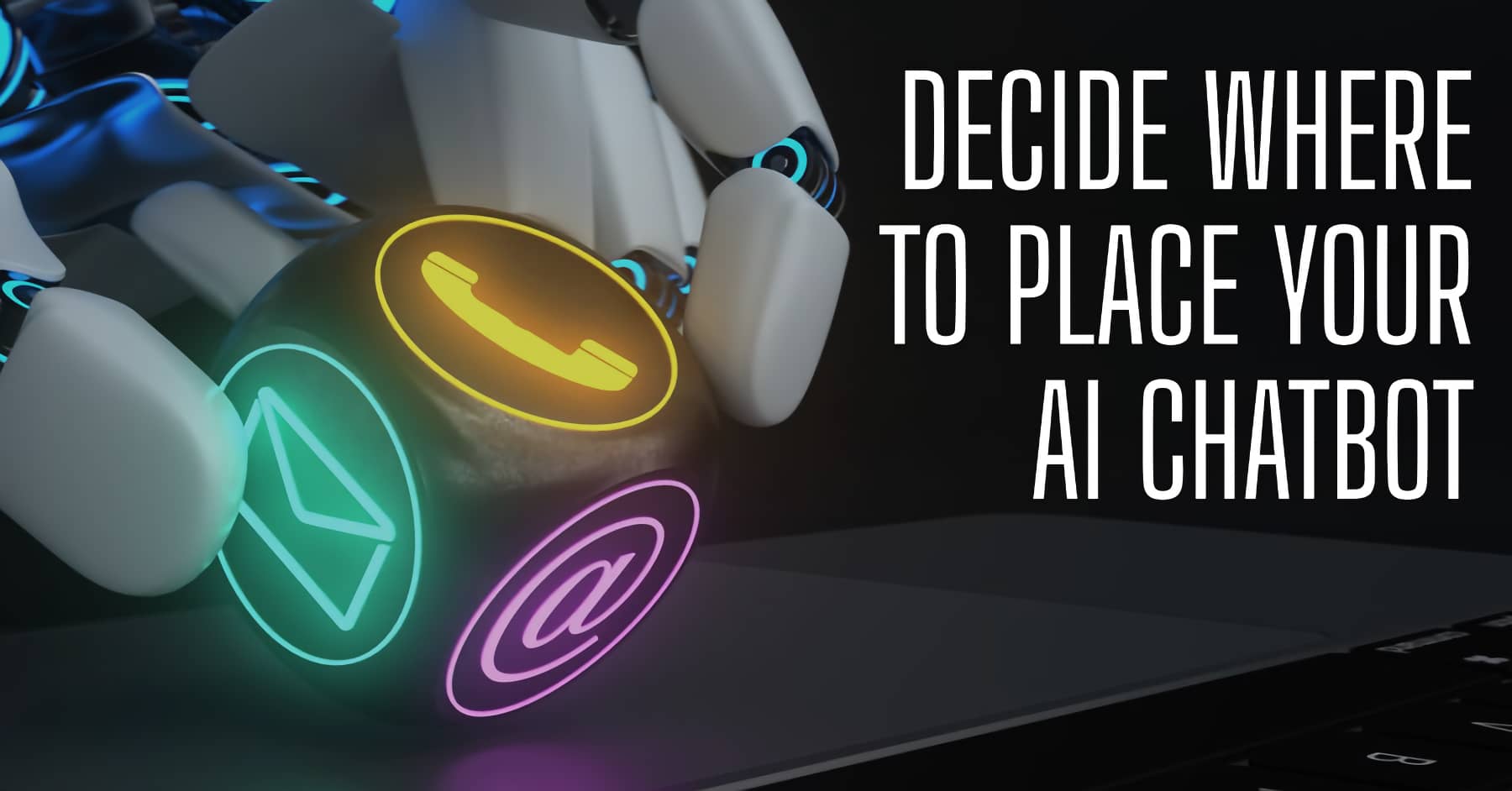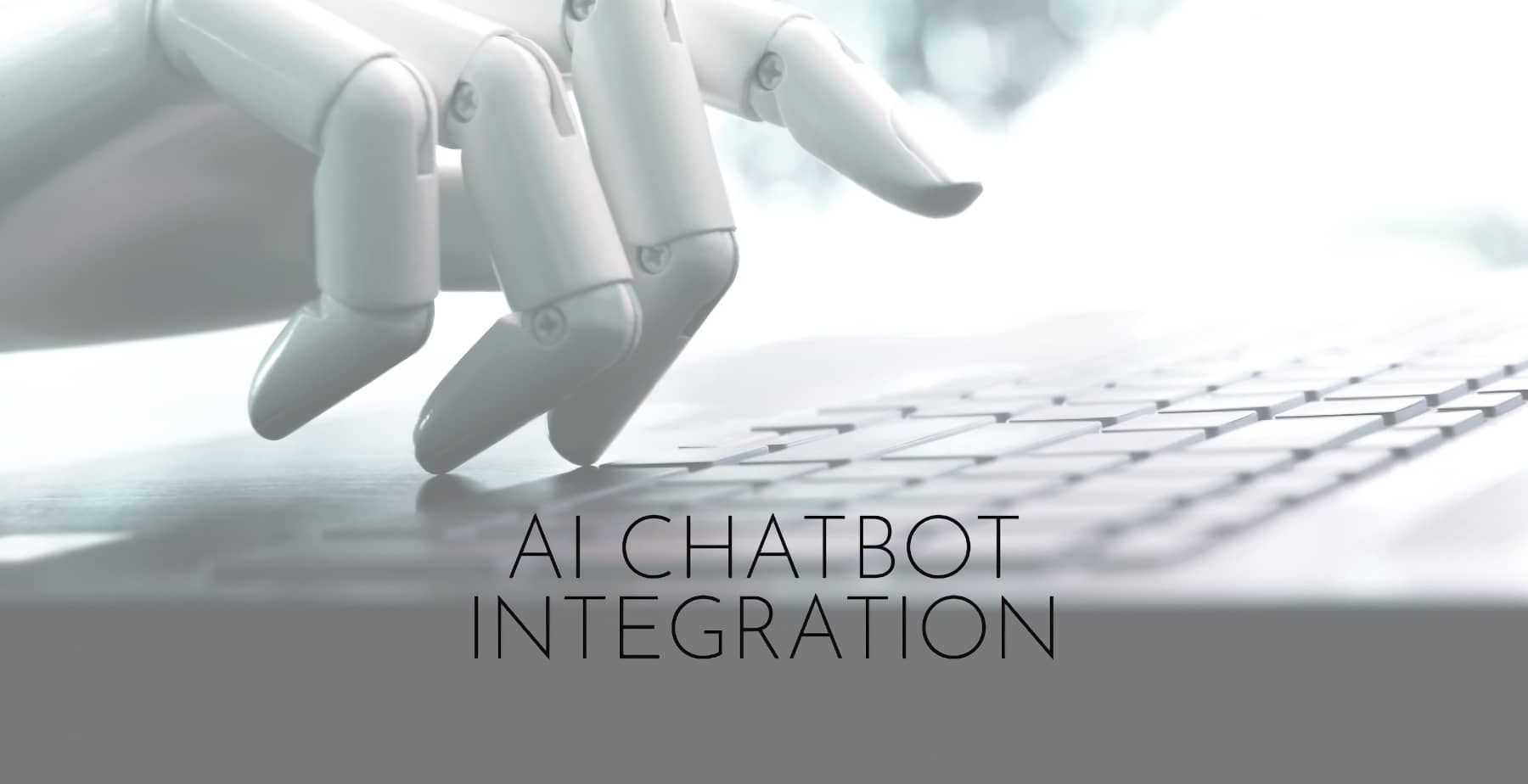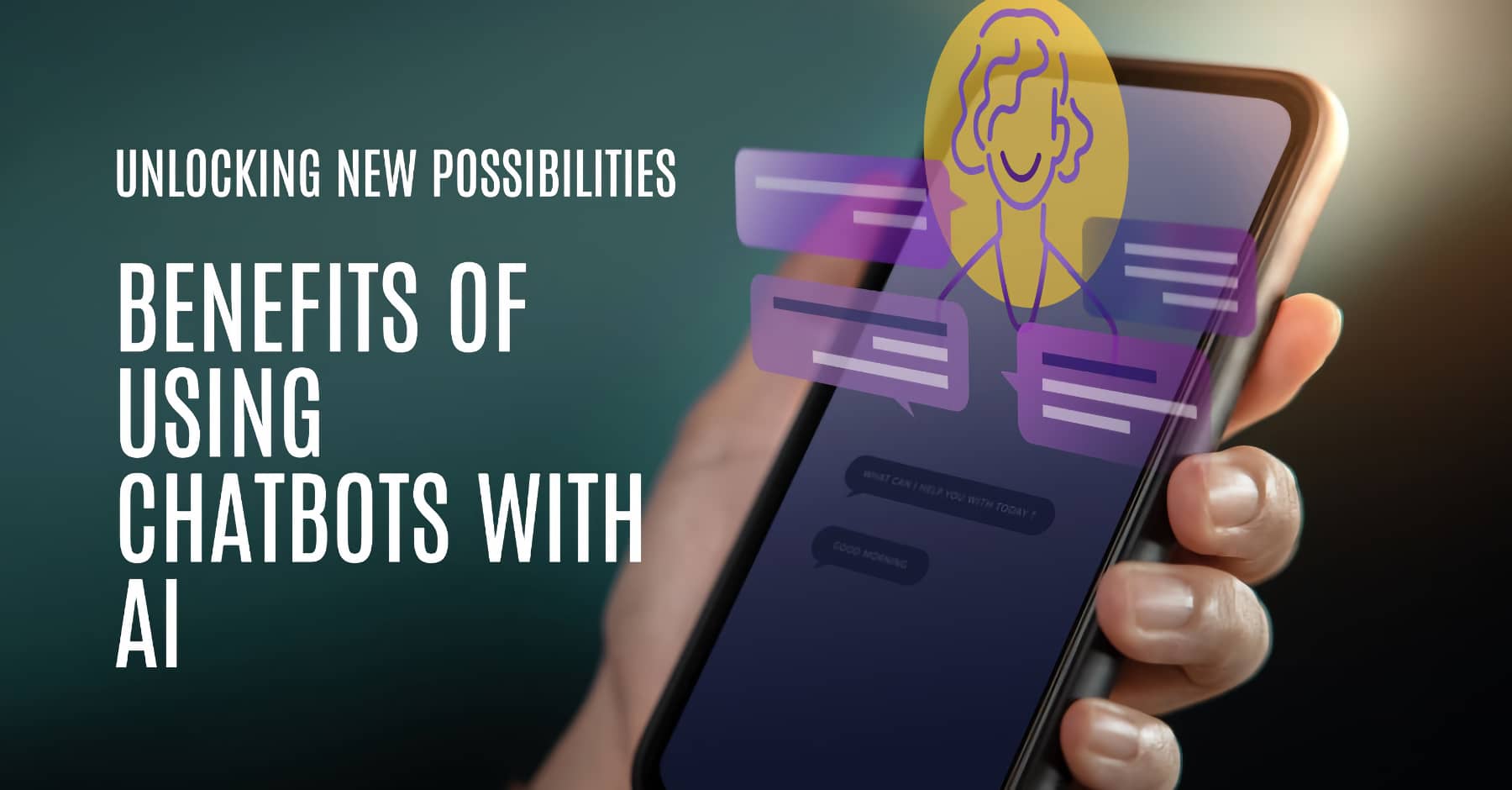The rise of AI chatbots has revolutionized the way businesses interact with their customers. They not only offer cost-effective, personalized support but also improve overall customer satisfaction. The process of AI chatbot development can be challenging, especially for those new to the AI and chatbot landscape. In this step-by-step tutorial, we will guide you through the process of learning how to make an AI chatbot from scratch in 2023.
Identify the Purpose of Your Custom AI Chatbot
Before beginning the development process, you need to determine the primary purpose of your custom AI chatbot. Some common objectives include:
Providing customer support
Handling sales and transactions
Offering personalized recommendations or services
Engaging users through gamification
Having a clear idea of the purpose will allow you to choose the appropriate technologies and design a more effective conversational flow, thus helping in building an AI chatbot that meets your goals. For some inspiration, you can check out these successful use case examples: empowering truck drivers with Ingest.ai and empowering Bretts Malinowski team and community with Ingest.ai.
Decide Where You Want Your AI Chatbot to Appear

Choosing the right platform for your AI chatbot is essential, as it directly impacts its visibility, user reach, and overall effectiveness. When deciding where you want your AI chatbot to appear, consider the following factors:
Target Audience
Your target audience should be at the center of your decision-making process. If your target audience primarily uses Facebook Messenger, it makes sense to prioritize that platform. Conversely, if your audience consists of professionals who frequently use Slack for communication, it might be a better choice for your chatbot. Similarly, WhatsApp can be a great option if you want to target users who rely on smartphones for most of their online activities.
Platform Capabilities
Different platforms offer varying capabilities, features, and limitations. When choosing a platform, ensure that it supports the key functionalities you want your AI chatbot to possess. This could include support for rich media like images, videos, and carousels, or features like quick replies and buttons. Investigate the platform's scalability, as you'll need a solution that can grow along with your user base and evolving requirements.
Ecosystem Integration
Consider how well your AI chatbot can integrate with the platform's ecosystem and related services. For example, an e-commerce chatbot might require integration with an online store platform, payment gateways, and CRM systems to deliver a seamless user experience. Ensure the chosen platform provides the necessary APIs and supports third-party integrations that align with your chatbot's objectives.
Security and Compliance
Depending on the nature of your chatbot and the information it will handle, take into account the platform's security features, data privacy measures, and compliance with relevant regulations. This is particularly important for chatbots that deal with sensitive user information, such as personal details, financial data, or confidential records.
Cost and Resources
Ensure that you factor in the platform's cost and the resources required for implementation and maintenance. Building a chatbot can require a significant investment of time, money, and efforts. Explore both free and paid options that offer a good balance between feature availability and affordability, while allowing you to allocate resources efficiently.
By carefully evaluating these factors, you'll be able to choose the most suitable platform for your AI chatbot, ensuring it reaches the intended audience and a provides a delightful user experience.
The ChatBot Design

The design of an AI chatbot plays a crucial role in its success, as it directly influences user engagement, satisfaction, and overall performance. An effective chatbot design not only focuses on aesthetics but also considers the key aspects of communication, ensuring the chatbot is easy to use and understands user inputs efficiently.
When designing a chatbot, simplify the user experience by anticipating typical interactions, minimizing friction, and reducing the cognitive load required to navigate through conversations.
Developing a unique chatbot personality that aligns with your brand's identity helps create a relatable and memorable user experience.
For a seamless user experience, when you create an AI chatbot, consider the following:
Use a consistent tone and personality that aligns with your brand identity
Design conversation flows that naturally guide users to their desired outcome
Ensure your chatbot is responsive, helpful, and easy to use
To create an effective chatbot, you'll need to consider how to use ChatGPT and overcome ChatGPT's limitations.
Planning Your AI Chatbot and Components
When you're learning how to build an AI chatbot from scratch, it's essential to understand the various components, including functional components and user interface elements.
Functional Components
Functional components are the building blocks of your chatbot that allow it to process user inputs, access databases, and generate responses. Some key components to consider when developing an AI chatbot from scratch include:
Natural Language Processing (NLP): NLP enables chatbots to understand and interpret human language, allowing text or speech inputs to be transformed into structured data that the chatbot can work with.
Machine Learning (ML): ML algorithms help the chatbot learn from user interactions and improve its accuracy over time. These techniques can enable your chatbot to adapt to user behavior and deliver better-quality responses.
To ensure your chatbot is ready for these components, it's crucial to prepare data for AI and utilize proper management techniques like AI knowledge base management.
UI Elements
User Interface (UI) elements enhance user interaction and engagement. Some UI elements to consider when building an AI chatbot include:
Buttons and Quick Replies: Provide users with predefined options to streamline communication and reduce the chance of misunderstandings.
Images, Videos, and Other Media: Use visual elements to enhance user experience and provide more engaging content.
Carousels and Cards: Organize complex information and multimedia content to make it easily digestible for users.
Natural Language Processing (NLP)
NLP is an essential part of any AI chatbot. It parses user inputs, identifies intent and context, and generates appropriate responses. The main components of NLP are:
Tokenization: Break user inputs into individual words or phrases (tokens) that can be analyzed by the chatbot.
Intent Recognition: Determine the user's goal (e.g., asking a question, making a purchase) based on the input.
Entity Extraction: Identify relevant information within user inputs, such as names, dates, or product details.
Popular NLP frameworks and tools include spaCy, NLTK, and Google's Dialogflow when it comes to how to create AI chatbots that efficiently process natural language.
Machine Learning
To provide more accurate and useful responses, your chatbot needs to learn from user interactions using ML. Popular ML techniques for chatbot development include:
Supervised Learning: Train your chatbot with labeled examples to recognize patterns and user intentions.
Unsupervised Learning: Automatically discover patterns in data without prior labeling. This can help your chatbot learn how to group similar conversation topics or understand user sentiment.
Reinforcement Learning: Adjust your chatbot's behavior based on feedback from user interactions in real-time.
Make sure you understand the importance of harnessing AI and virtual assistant chatbot technology for business.
Integrating Your AI Chatbot with Various Platforms

Integrating your AI chatbot with your chosen platform(s) is a crucial step in delivering a seamless user experience. The integration process ensures that your chatbot can easily communicate with users, access critical data from your systems, and perform the necessary actions. Here's an overview of the key aspects to consider during the integration process:
Selecting the Right Platform
Before diving into the integration process, identify the right platform where your chatbot will interact with users. Some popular options include:
Messaging platforms like Facebook Messenger, WhatsApp, and Slack
Your company's website or mobile application
Voice and virtual assistant platforms, such as Amazon Alexa and Google Assistant
Consider the demographics of your target audience, the required chatbot features, and the ease of integration when selecting your platform.
API Access
When integrating your chatbot, you'll likely need to access the platform's API (Application Programming Interface). APIs provide a structured set of rules that enable your chatbot to communicate with the platform's backend services, allowing for seamless user interactions and data exchange.
Ensure that you have the necessary permissions and access to the platform's API documentation to facilitate smooth integration.
Third-Party Integrations
The chatbot may need to communicate with additional third-party services or your internal systems to perform specific tasks, access your existing databases, or provide personalized recommendations.
Ensure that your chatbot has the required access to these systems by integrating relevant APIs or tools.
Security and Data Privacy
During the integration process, consider the necessary security measures to protect user data and maintain compliance with data protection regulations. Encrypt sensitive data, employ strong authentication mechanisms, and ensure that your chatbot follows industry-standard security best practices.
Testing
Thorough testing is critical to ensure a smooth, error-free user experience. Test your chatbot for various use cases, exit scenarios, and error-handling situations. Some important aspects to be tested when examining how to make an AI chatbot that delivers results include:
NLP accuracy and response relevance
UI elements' functionality and performance
Managing conversation escalations and fallbacks
Deployment AI Chatbot
After successful testing, deploy your chatbot on the chosen platform. Ensure that the deployment process is well-documented and follows platform-specific guidelines. This is a crucial step when learning how long it takes to create an AI chatbot and bring it live for user interactions.
Take the time to review how to revolutionize your business with Ingest.ai: build internal AI tools for additional insights.
Train Your Chatbot
Continuously improve your chatbot by training it with new data and user interactions. Regularly review user inputs and responses to identify areas for improvement, including intents, entities, and conversation flow. Use ML models to fine-tune your chatbot's performance over time.
Optimizing Your AI Chatbot
Consider implementing the following optimization techniques to enhance your chatbot's performance:
A/B Testing: Experiment with different conversation flows, user interfaces, and responsevariations to identify the best-performing options.
Personalization: Use user data to provide personalized experiences, such as frequent-user greetings or tailored product recommendations.
Sentiment Analysis: Detect user sentiment (positive, negative, or neutral) and adapt responses to maintain engagement and address user emotions.
Collect Feedback from Users
User feedback is invaluable for improving your chatbot's performance and usefulness. Solicit feedback through direct questioning, feedback buttons, or surveys. Take this feedback into account while updating and refining your chatbot.
Monitor Chatbot Analytics to Improve It
Closely monitor your chatbot's performance analytics, such as engagement, retention, user satisfaction, and conversion rates. Identifying trends and issues in these metrics will help you continuously improve your chatbot and offer a more useful and enjoyable experience for your users.
Benefits of Using Chatbots with Artificial Intelligence

The implementation of AI chatbots, such as ChatGPT, has become a game-changer for businesses looking to enhance customer support, marketing, sales, and internal operations. By leveraging cutting-edge natural language processing and machine learning technologies, these chatbots unlock significant benefits for organizations that adopt them. The following are the key benefits businesses can derive by using AI chatbots like ChatGPT:
Increased Conversions
AI chatbots play an integral role in nurturing users at each stage of their journey, from initial interest to finalizing a purchase or commitment. By offering personalized assistance and suggestions, chatbots can substantially boost the conversion rates for your promotional and sales campaigns. They achieve this by:
Engaging users effectively and capturing leads more efficiently
Providing immediate and informative answers to customer queries, reducing the likelihood of drop-offs
Presenting relevant upselling and cross-selling opportunities through personalized recommendations
Simplifying the buying process, minimizing friction and enhancing customer satisfaction
Enhanced Internal Efficiency
AI chatbots not only excel in customer-facing roles but also add value to internal business processes. They can improve productivity, streamline operations, and foster better coordination within organizations. Here are some ways ChatGPT-like AI chatbots enhance internal efficiency:
Automating routine tasks, allowing employees to devote more time to strategic and creative endeavors
Offering instant, precise responses to common employee questions related to HR policies, IT issues, or other internal topics
Decreasing response times and organizational roadblocks by connecting employees with necessary resources or the right colleagues
Promoting collaboration and communication by serving as a centralized source of knowledge for teams
Elevating Product Offerings
Incorporating AI chatbots like ChatGPT can help enrich your product offerings and generate new revenue channels for your organization. Several ways that chatbots can bolster your product portfolio are:
Tailoring user experiences with customized suggestions and insights, thereby increasing the perceived value of your products or services
Ensuring round-the-clock customer support, cultivating trust, brand loyalty, and customer satisfaction
Enabling unique features and functionalities, such as voice-operated services or integrating chatbots with IoT devices
Constantly learning from user behavior and preferences, ensuring your product offerings remain relevant and competitive in the market
Integrating AI chatbots like ChatGPT into your daily business practices yields numerous benefits, including increased conversion rates, improved internal efficiency, and elevated product offerings. By tapping into the potential of AI chatbot technology, your organization can deliver exceptional customer experiences, drive sales, and foster a more productive work environment. Adopting AI chatbots sets the stage for long-term success and a competitive edge in today's dynamic markets.
Conclusion
Building an AI chatbot from scratch can be a challenging yet rewarding experience. By following this step-by-step tutorial, you will be well-equipped to create a conversational AI that provides real value to your users and enhances their experience. Keep up-to-date with the latest AI advancements and continuously iterate on your chatbot's performance to stay ahead in the ever-evolving world of AI chatbots. And remember, IngestAI.io can help turn your docs, wikis, and spreadsheets into a ChatGPT-like context-aware chatbot, enhancing your business outcomes!


